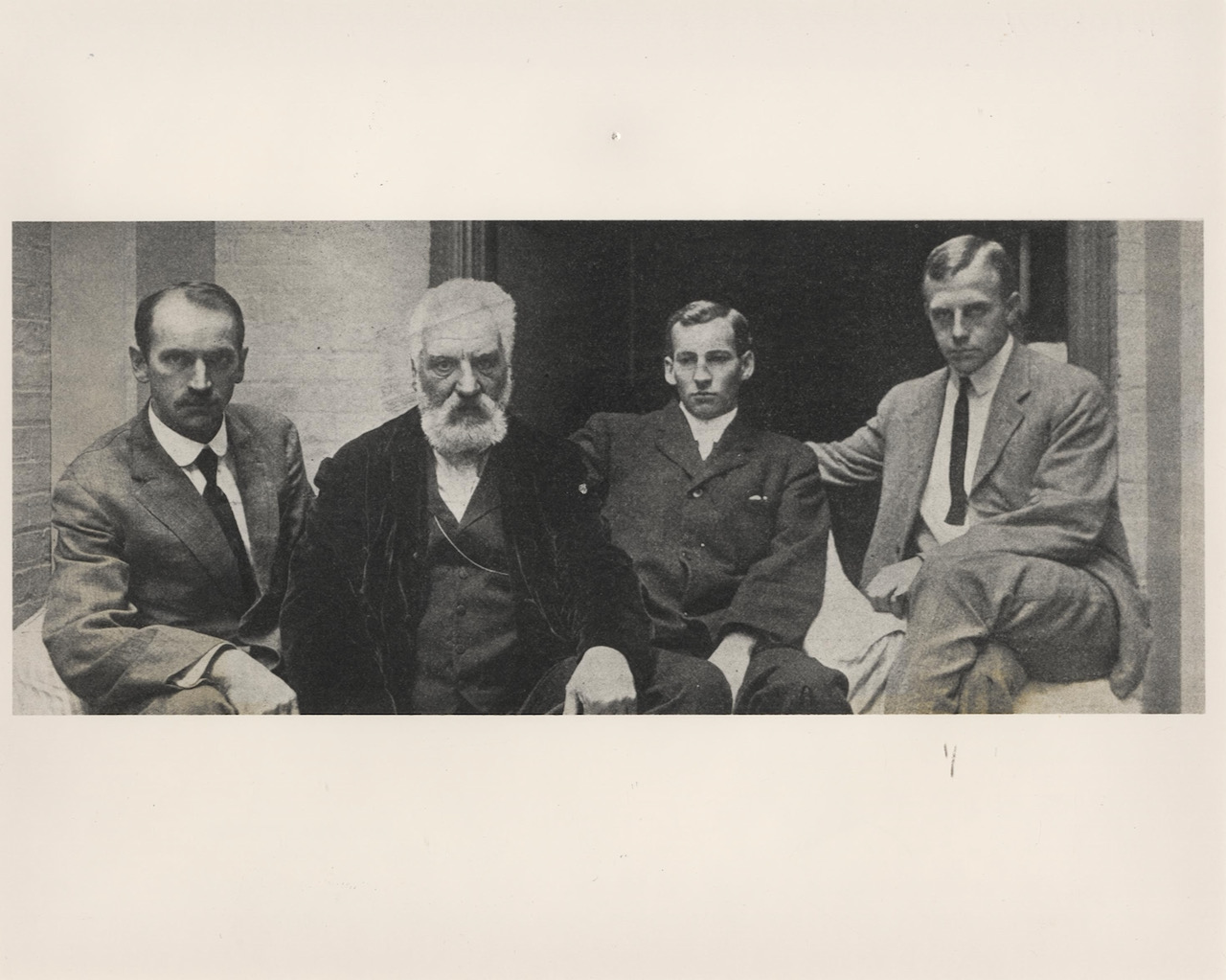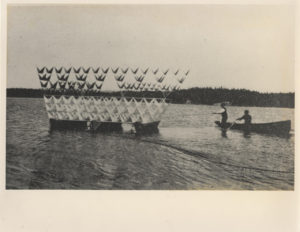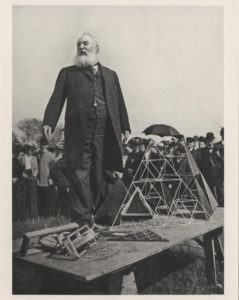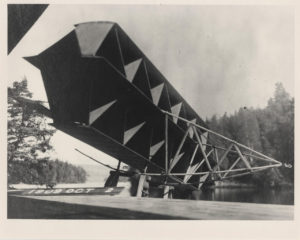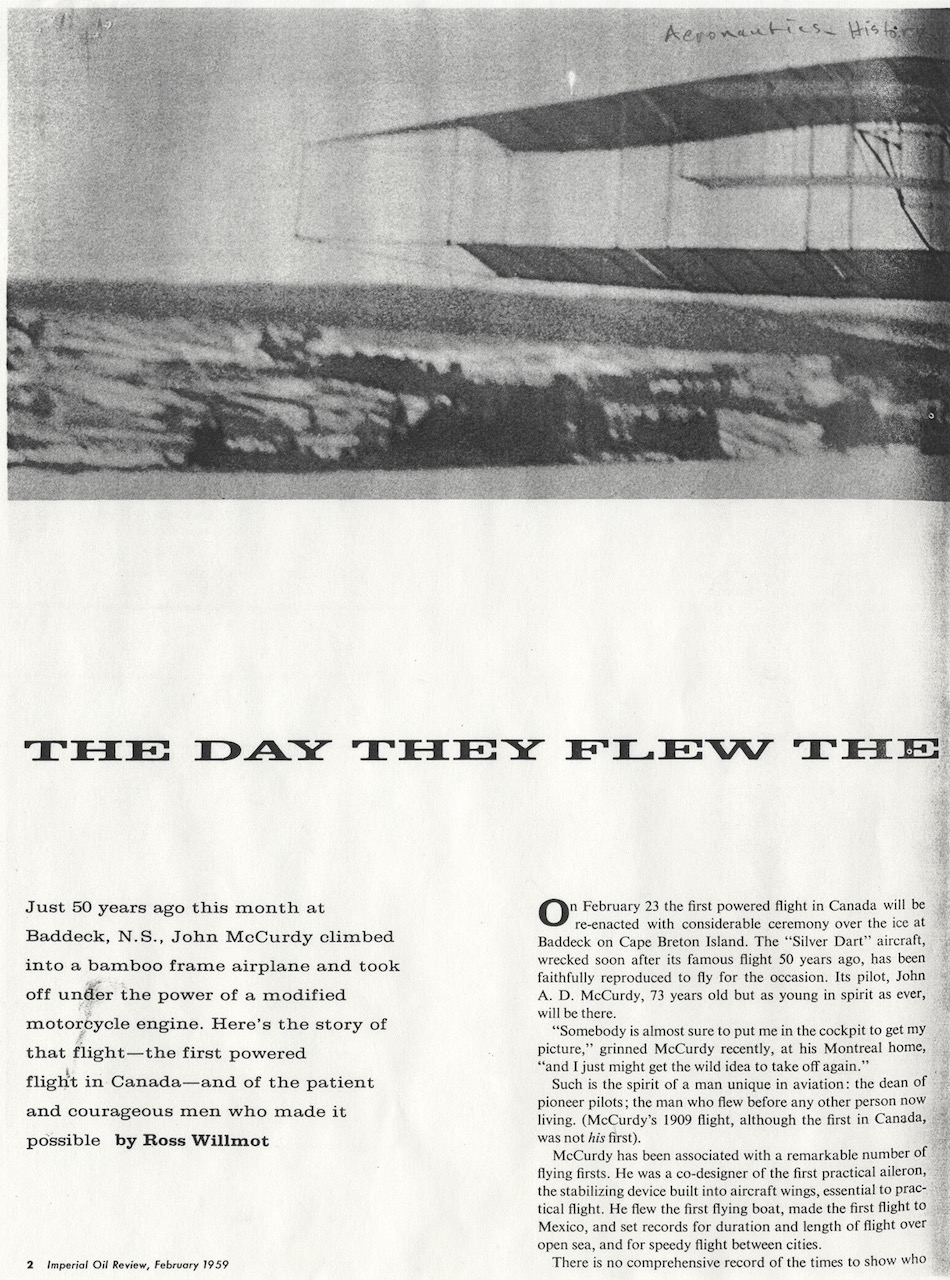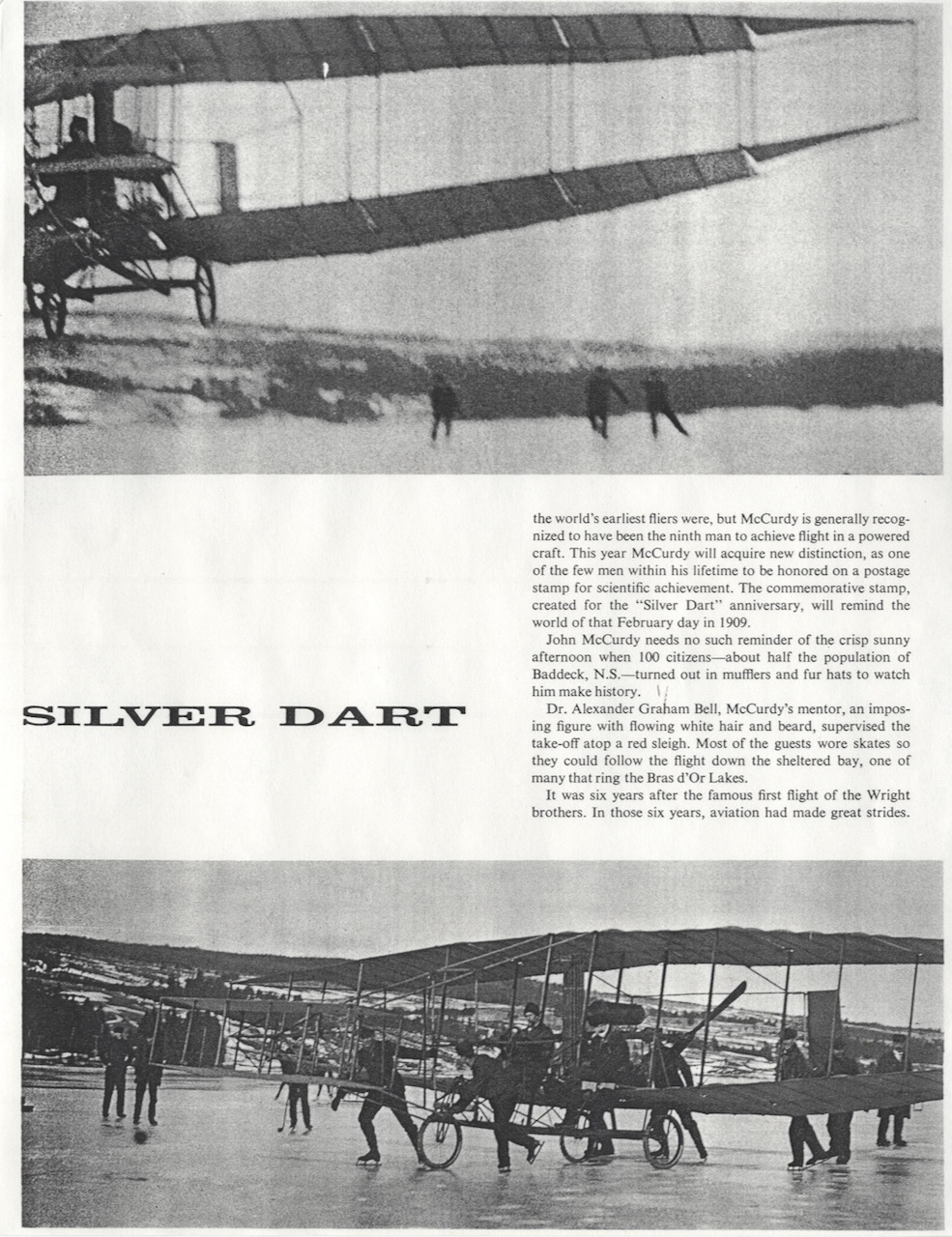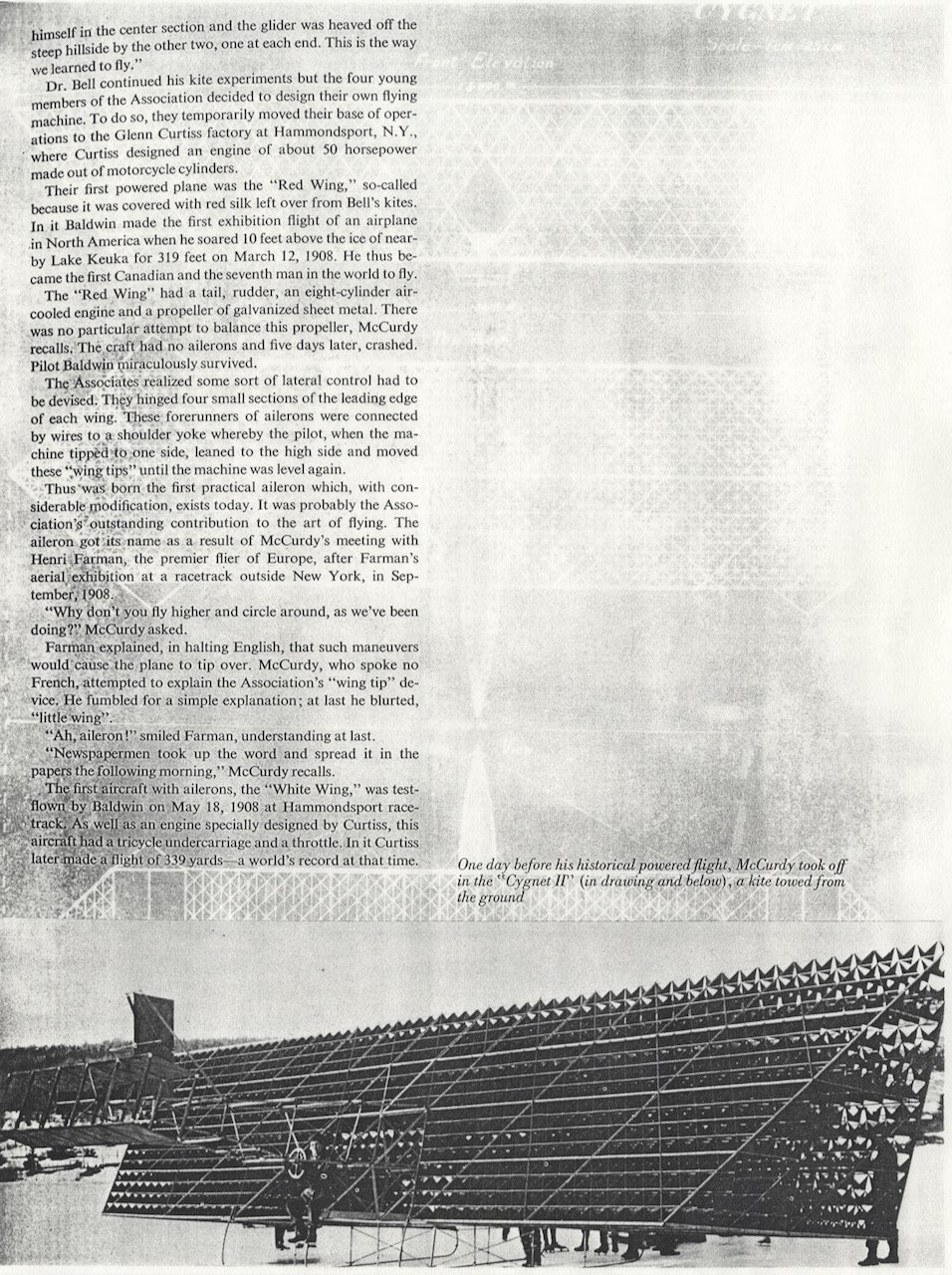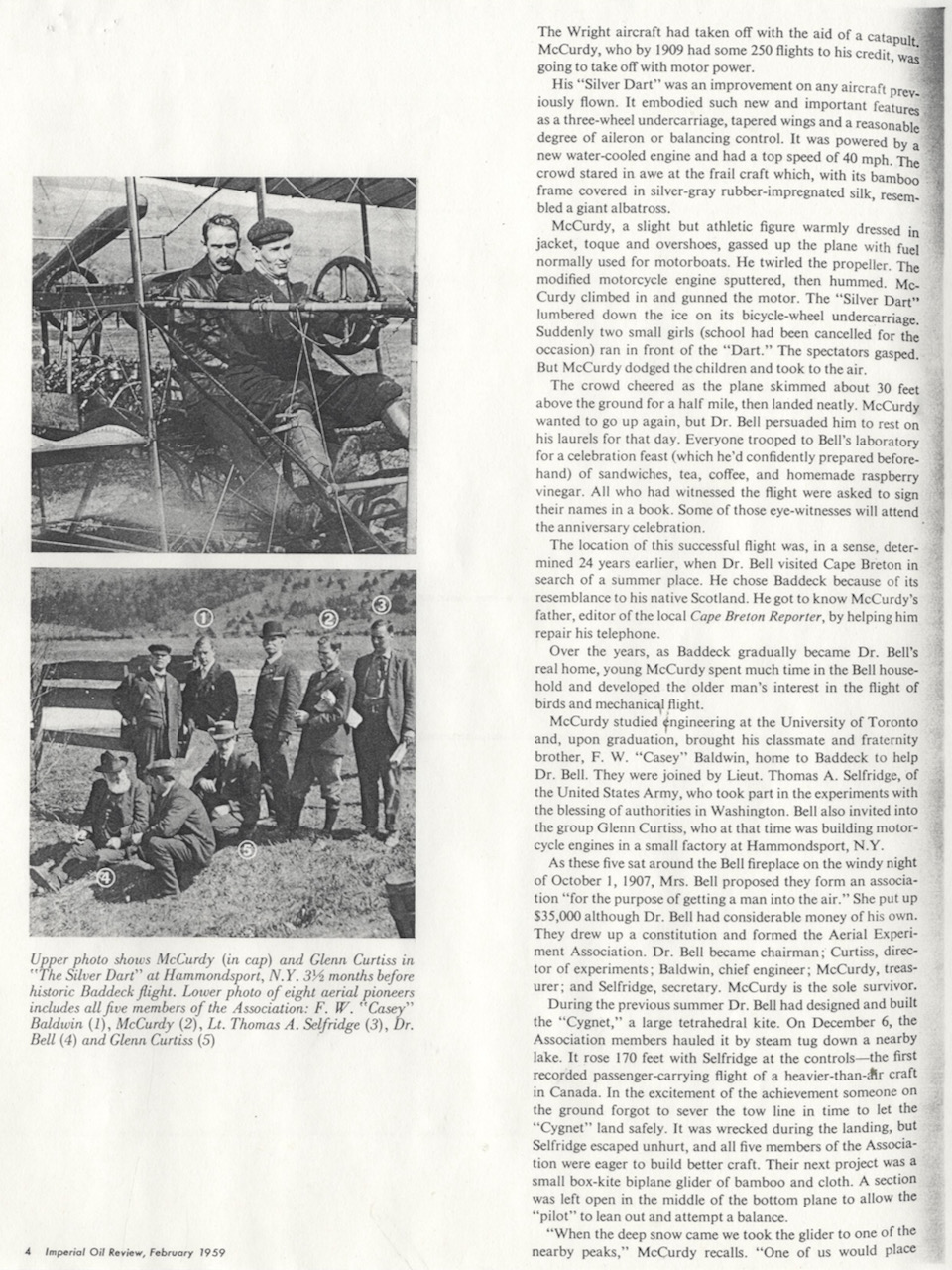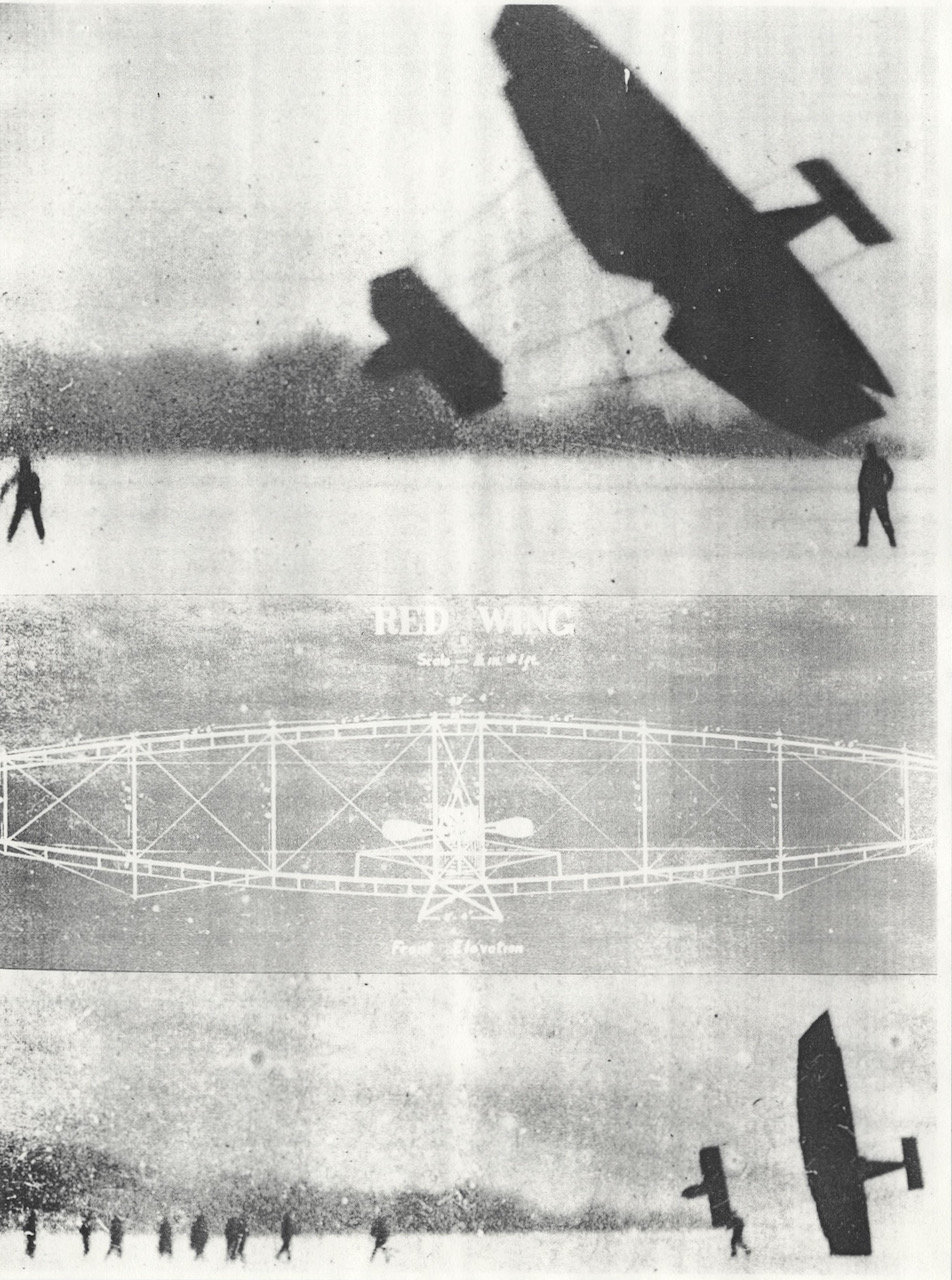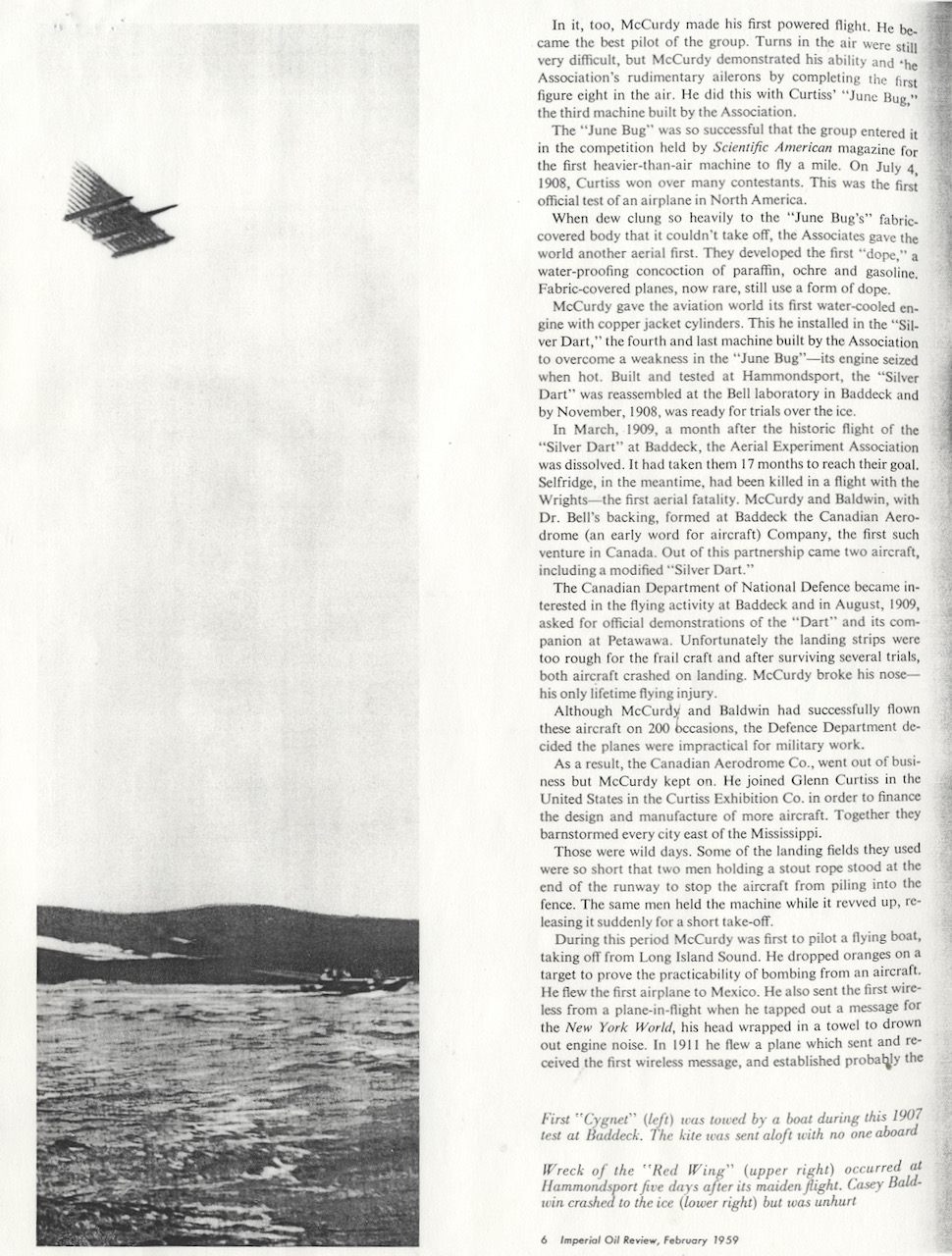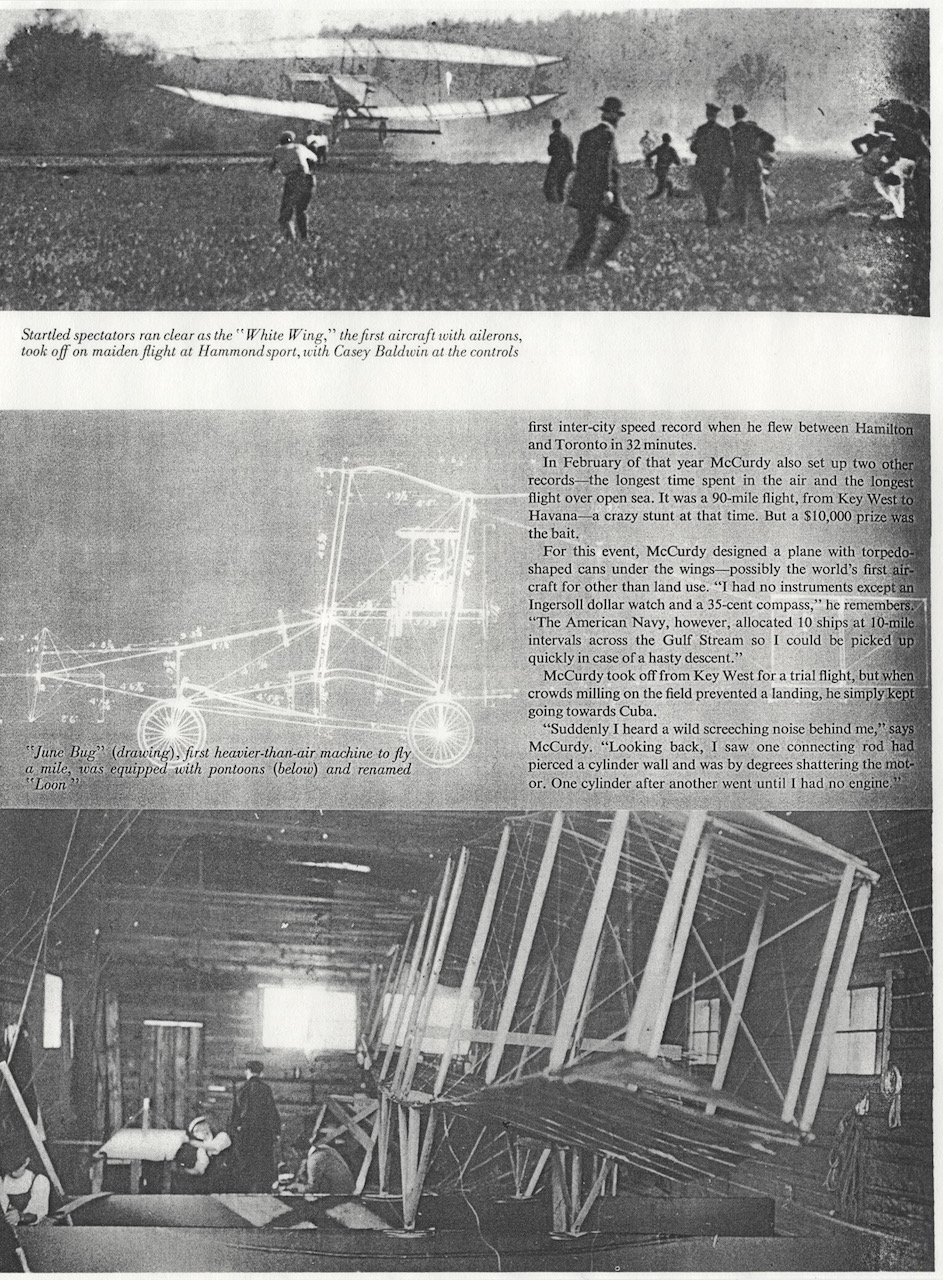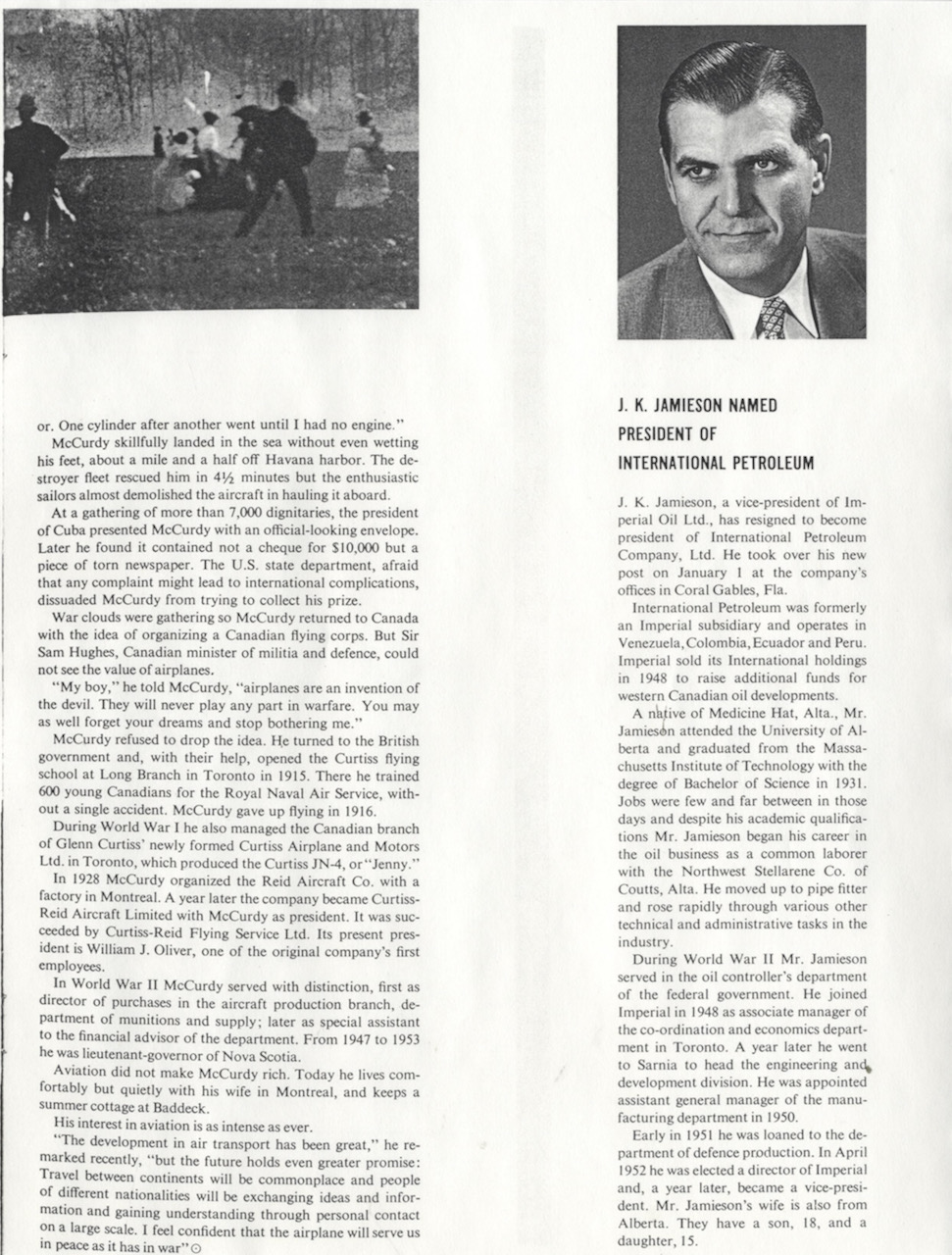Alexander Graham Bell
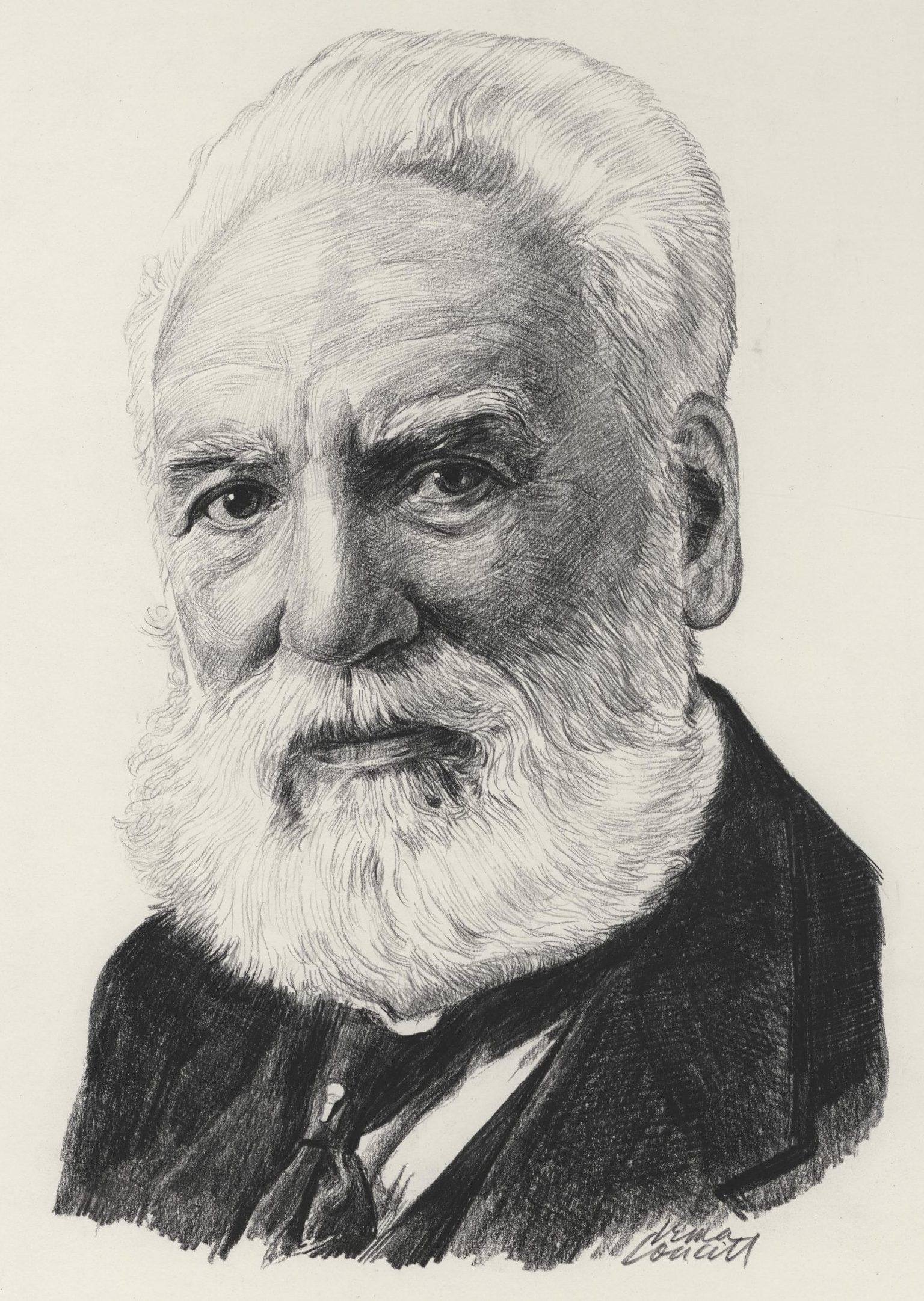
Birth Date: March 3, 1847
Birth Place: Edinburgh, Scotland
Death Date: August 2, 1922
Year Inducted: 1974
Awards: PhD(Hon); LLD(Hon)
The brilliance of his intellect, applied without reserve to the mystery of manned flight, was a prime factor in the birth of North America's aviation industry and has proven to be of outstanding benefit to Canadian aviation
The Speaking Wire
Alexander Graham Bell, D.Sc., M.D., Ph.D. (Hon), LL. D. (Hon). was born in Edinburgh, Scotland , on March 3, 1847, and educated there and in London, England. In 1870 he moved with his parents to Brantford, Ontario, where he taught speech therapy to deaf persons and began his initial experiments with voice transmission. A few years later he moved to Boston, Massachusetts, and opened a school for the training of teachers who would instruct the deaf.
Bell invented the forerunner of the modern telephone in his first successful experiment with what he called a 'speaking wire', when he transmitted his spoken message on March 10, 1876, to Thomas Watson in the next room of his apartment in Boston. He also invented a device for transmitting photographs through a beam of light, and shortly thereafter, a workable gramophone. He interested himself in the principles of mechanical flight, a subject on which he gave numerous lectures and published a number of scientific papers. He was named President of the National Geographic Society in January of 1898.
Propellers and Kites
Bell established a summer residence at Baddeck, Nova Scotia, on Bras d'Or Lake, Cape Breton Island. He began experimenting in 1891 with rocket-powered propellers, which can now be identified with modern day helicopter rotors, and graduated to designing and flying huge man-carrying tetrahedral kites. For many years he had been conducting experiments with other kite designs in an attempt to learn which lifting surfaces were the most effective. He also introduced to aviation the hinged wing-tip aileron control.
In 1905 he saw his kite, Frost King, successfully flown, lifting into the air a total of 227 pounds (103 kg). Two years later he produced the even larger Cynet, designed to lift the weight of a man and an engine. On December 6, 1907, it was towed to a height of 168 feet (50 m), carrying Lieutenant T.E. Selfridge of the United States army as passenger/pilot. Earlier that year, in Halifax, Nova Scotia, Bell and his wife, Mabel, had formed the Aerial Experiment Association (AEA) with two young engineers, J.A.D. McCurdy and F.W. Baldwin. This group was joined by Glenn Curtiss of Hammondsport, New York, and Lt T.E. Selfridge. It was Curtiss' engine that powered the AEA's experimental airplanes.
Time to Fly
The AEA group continued to experiment with Bell's kite ideas, but soon moved their activities to Curtiss' shop at Hammondsport. It was there that they built a series of four heavier-than-air machines, and in March of 1908, F.W. Baldwin became the first Canadian to fly the first of these, the Red Wing. It was a design conceived by Bell and so-named because it used red silk fabric left over fro his kite-building. This airplane took off under its own power and used skis on the ice surface. A second flight ended in a crash and destruction of the aircraft.
These followed flight of other Bell aircraft: the White Wing, the June Bug, which was flown mainly by Curtiss around the Hammondsport area, and the Silver Dart, which first flew at Hammondsport on December 6, 1908. Its bamboo frame was covered in silver-grey rubber-impregnated silk. It featured a three-wheeled undercarriage, tapered wings, and small wing-tip ailerons for balance control. It also had a steerable front landing wheel which facilitated ground positioning.
Dr. Bell explaining to a party of scientists the principle of his tetrahedral kites which he believes will form the basis of the successful flying machines. 26 December 1908.
Flight in Canada
Bell wanted the Silver Dart to fly in Canada and had it shipped to Baddeck in January 1909. There, McCurdy made the first flight in the British Empire, on February 23, 1909. That same year the AEA was dissolved after having reached its goal of achieving powered, manned flight.
While experimenting with airplanes, Bell applied the dynamic principles of the air foil to power boats and invented the first hydrofoil craft. In 1914 he predicted, "I have no doubt that in the future, heavier-than-air machines of great size, and of different construction from anything yet conceived of, will be driven over the earth's surface at enormous velocity . . . hundreds of miles an hour, by new methods of propulsion."
The United States Army sought his advice in 1919, when he was 72 years of age, to outline their policy of military aeronautics. He died on August 2, 1922, at Baddeck, Nova Scotia, after receiving numerous academic honours and awards.
In 1876 Bell's voice was first heard being transmitted over a thin wire into the room next to where he was standing. Over the next 30 years his creative genius gave the world many new ideas and inventions which would have a great impact on the way people live. One of these was his theory of flight, and experiments testing the lifting power of plane surfaces at slow speed. Bell is unquestionably one of the world's earliest pioneers of manned flight.
Alexander Graham Bell was inducted as a Member of Canada's Aviation Hall of Fame in 1974 at a ceremony held in Edmonton, Alberta.
News Stories
To return to the Inductee Page, please click here.

